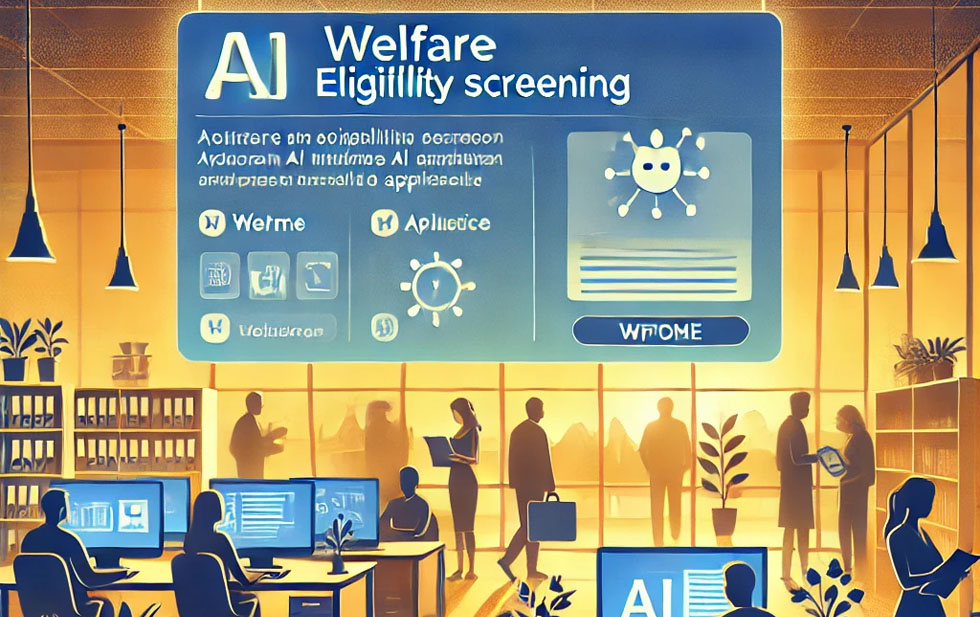The Quiet Shift: Harnessing AI in Welfare Eligibility Screening
The Quiet Shift: Harnessing AI in Welfare Eligibility Screening
With the growing intersection of artificial intelligence (AI) and public welfare systems, a novel trend in automated welfare eligibility screening is evolving.
31 July 2024
BACK TO BLOGS

Enhanced by machine learning and data analytics, these technologies promise to reshape how governments ascertain eligibility, improve accuracy, and reduce fraud. However, such advancements also raise critical concerns about privacy, fairness, and accountability.
Automated welfare eligibility screening isn't just about cutting costs—it's becoming a crucial strategy that involves a blend of technology, policy, and societal values. This article exposes a weak signal in automated welfare determinations that could, given the trajectory of technological adoption and regulatory landscapes, ripple through social systems globally.
What's Changing?
In recent times, several countries have begun experimenting with AI in managing and processing welfare benefits. For instance, the Dutch taxation authority's implementation of a self-learning AI algorithm to create risk profiles to fight fraud in childcare benefits shows an emerging lean towards automation in welfare systems (Securiti, 31 January 2024). Similarly, in Canada, Ontario's policy now requires welfare recipients to seek all possible financial avenues, hinting at a systemic push for more stringent eligibility verification processes (The Globe and Mail, 25 February 2024).
Conversely, there's a movement towards simplification and humanization in welfare. The Southern Australian social supermarket model, which abolishes traditional eligibility verifications for accessing affordable food, reflects a shift towards trust-based, dignity-preserving assistance models (phys.org, 29 January 2024).
Why is this Important?
Balancing fraud prevention with fair access to welfare benefits is a governmental priority. Automated systems promise efficiency but also pose significant risks of perpetuating biases. The controversy surrounding the Dutch government's algorithm, which erroneously flagged non-Dutch nationals as higher risk for fraud, highlights potential pitfalls (Legal Futures, 7 March 2024). This underscores the importance of transparency, accountability, and the need for mechanisms to prevent discrimination in automated systems.
Implications
The advancement of automated welfare eligibility systems could lead to:
-
Enhanced Efficiency: Reducing manual processing and focusing efforts where human judgment is genuinely needed.
-
Increased Scrutiny: With automation comes a heightened risk of surveillance and privacy concerns, as data used can be personal and sensitive.
-
Regulatory Challenges: New technologies will require updated legal frameworks to ensure they are used ethically and equitably.
Questions
-
How can policy developers ensure AI-driven welfare systems are transparent and accountable?
-
What mechanisms are necessary to protect sensitive data within these automated systems?
-
How might public perception evolve concerning privacy and surveillance in welfare benefits?
Keywords
Artificial Intelligence; Automation; Ethics in AI; Welfare Technology
Bibliography
-
AI TRiSM: Navigating the Maze of Data+AI Security with Confidence. Securiti. 31/01/2024.
-
Ontario requires welfare recipients to pursue any other financial resources that might be available - even when there is no certainty about whether they actually qualify for them. The Globe and Mail. 25/02/2024.
-
Praise for Australian 'social supermarket' model. phys.org. 29/01/2024.
Combatting discrimination caused by algorithms requires a uniform approach. Legal Futures. 07/03/2024.
Mini Series: How AI may create new opportunities for Public Services!
Public Services are at the brink of the most important improvement for decades. By rethinking what is possible and incorporating AI assistance to achieve significant better results for citizens the world over.
Automating welfare eligibility screening isn't just about cutting costs—it's becoming a crucial strategy that involves a blend of technology, policy, and societal values. Today's Quick Take exposes a trend in automated welfare determinations that could, given the trajectory of technological adoption and regulatory landscapes, ripple through social systems globally - Check our Quick Take for the the full insight ...
Shaping Tomorrow is all about our Future
- Horizon Scanning
- Options Analysis
- Trends and Weak Signals
- Structured Overviews, Quick Takes, Graphics and Reports
